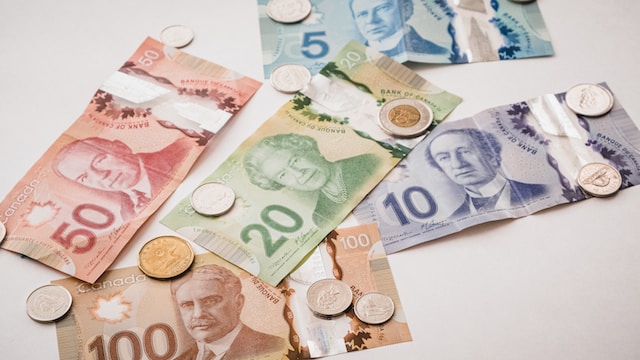America's recovery from dollar degradation provided insights into various factors such as monetary policy, geopolitical considerations, and perception.
However, a critical review revealed several limitations and a failure to adequately address fundamental issues that pose risks to the currency's long-term stability.The analysis of monetary policy overlooked the potential adverse effects of aggressive easing and low-interest rates, failing to address concerns such as asset bubbles and inflation. Geopolitical considerations were discussed, but the articles did not adequately explore the risks and limitations associated with relying on external factors for dollar recovery, such as the challenges posed by rival currencies. Similarly, while the role of perception was acknowledged, the articles missed the opportunity to examine its drawbacks and the need to address underlying structural weaknesses.
SYNOPSIS
Fundamental issues such as high levels of debt, income inequality, structural weaknesses, and trade imbalances should have been given more attention in the articles. These issues pose significant challenges to the dollar's recovery and require comprehensive policy responses to ensure sustainable growth and stability.
A critical assessment highlights the need for a more comprehensive and holistic approach to analyzing America's dollar recovery. Future analyses should consider a broader range of factors, including fiscal policies, wealth distribution, sustainable economic growth, and fair trade practices. By addressing these fundamental issues, policymakers can establish a solid foundation for the recovery and long-term stability of the dollar.
Introduction
In 2023, the United States experienced a remarkable turnaround in the value of its currency, the dollar, after a period of prolonged degradation. This supposed recovery, touted by policymakers and economists, was celebrated as a testament to America's economic resilience and prowess. However, a closer examination reveals a complex web of factors and questionable policies that ultimately mask the underlying issues and fragility of the American economy. This critical article aims to dissect the so-called recovery of dollar degradation in America and shed light on the inherent risks and uncertainties it carries.
The US dollar has shown signs of recovery over the past few months, due in large part to increased consumer spending and improved economic outlook. One service that has seen a surge in demand as US businesses and consumers start to gain confidence in the economy, is data recovery. Services like computer repair shops and specialized firms are offering data recovery services starting from as little as 300 dollars.
When searching for a data recovery service on Reddit, users will find a wide variety of reviews and comments that describe the experiences of others with the service. Many of these reviews will include how satisfied they were with the services, the duration it took, ease of setup, and the cost. To get a better understanding of the experiences others had with the data recovery service, researching Reddit can provide valuable insight.
In addition to searching for reviews on Reddit, individuals who are in need of data recovery services can also review the experiences of others who left feedback on third-party sites. Businesses such as the Better Business Bureau can provide users with data recovery reviews that will detail the experiences of others as well. Both Reddit and third-party sites can be used to provide insights into the reliability, customer service, and overall satisfaction with data recovery services.
When researching data recovery services, another useful tool is finding reputable firms in the locality. Businesses like computer repair shops or specialty firms offer data recovery services for as little as 300 dollars. These firms might even be in the same city as the individual who needs services, making it easier and cheaper to get the job done.
No matter the issue, individuals in need of data recovery services will be able to find a reliable and cost-effective solution that meets their requirements. With the help of reviews on Reddit, third-party sites, and locating data recovery services near them, individuals are able to get started on the path of recovering their data.
Addressing Fundamental Issues: A Crucial Step Towards Dollar Recovery
 |
| Photo by Markus Spiske on Unsplash |
A critical examination of the previous articles on America's dollar recovery reveals a significant oversight in adequately addressing fundamental issues that underlie the long-term stability of the currency. These fundamental issues pose substantial challenges and must be addressed to ensure a sustainable and robust recovery. This section delves deeper into some of these critical factors.
1. High Levels of Debt:
 |
| Photo by rupixen.com on Unsplash |
One of the fundamental issues plaguing the American economy is its massive levels of debt, both at the government and consumer levels. The growing national debt poses a long-term threat to the value and stability of the dollar. A failure to address this issue can lead to a loss of confidence in the currency and result in further degradation.
Reducing the national debt requires prudent fiscal management, including controlling government spending, increasing revenue streams, and implementing responsible budgetary policies. Additionally, addressing consumer debt through financial literacy programs and promoting responsible borrowing practices is essential for improving the overall financial health of the nation.
2. Income Inequality:
 |
| Photo by Arno Senoner on Unsplash |
Another critical fundamental issue that deserves attention is income inequality. The widening wealth gap in the United States undermines social cohesion and economic stability. It also poses risks to the recovery of the dollar by hindering domestic demand, creating imbalances in the economy, and exacerbating social and political tensions.
Addressing income inequality requires comprehensive policies that promote equitable income distribution, enhance social safety nets, and provide opportunities for economic mobility. Investing in education, job training, and infrastructure can help bridge the income gap and foster a more inclusive and resilient economy.
3. Structural Weaknesses:
 |
| Photo by Mathieu Stern on Unsplash |
The American economy suffers from underlying structural weaknesses that hinder its long-term growth prospects. Insufficient investment in infrastructure, declining manufacturing sectors, and inadequate support for research and development impede innovation, productivity, and competitiveness.
To overcome these challenges, the United States needs to prioritize infrastructure development, modernize its manufacturing capabilities, and promote innovation and technological advancements. By addressing these structural weaknesses, the economy can become more resilient, attract investments, and foster sustainable growth.
4. Trade Imbalances:
 |
| Photo by Luke Chesser on Unsplash |
Persistent trade imbalances, particularly with countries like China, pose significant challenges to the dollar's recovery. Large trade deficits erode the value of the dollar and can lead to increased dependency on foreign borrowing, potentially jeopardizing the currency's stability.
Addressing trade imbalances requires a comprehensive approach, including negotiations, fair trade policies, and efforts to promote domestic industries and exports. Encouraging domestic production, fostering innovation, and implementing measures to ensure a level playing field in global trade can help mitigate the risks associated with trade imbalances.
To achieve a sustainable recovery of the dollar and ensure long-term stability, it is essential to address the fundamental issues that underlie the American economy. High levels of debt, income inequality, structural weaknesses, and trade imbalances pose significant challenges that cannot be overlooked.
Policymakers must prioritize fiscal responsibility, prudent debt management, and equitable economic policies. Investments in education, infrastructure, and innovation are crucial for addressing structural weaknesses and fostering long-term growth. Furthermore, addressing trade imbalances through fair trade practices and domestic industry support can contribute to a more balanced and robust economy.
By tackling these fundamental issues head-on, the United States can lay a solid foundation for the recovery of the dollar and promote sustainable economic growth, ensuring the currency's long-term stability in the global financial landscape.
Role of Monetary Policy
 |
| Photo by Daniel Thomas on Unsplash |
A significant factor in the dollar's recovery was the intervention of the Federal Reserve. Employing a combination of aggressive monetary easing, quantitative easing, and interest rate manipulation, the central bank sought to stimulate economic growth and restore confidence in the dollar. However, this approach has its pitfalls. By flooding the market with cheap money, the Federal Reserve risks fueling inflationary pressures, thereby eroding the purchasing power of the dollar and undermining its long-term stability.
The Role of Monetary Policy: A Fragile Balancing Act
Monetary policy has been a key player in the recovery of the dollar degradation in America. The Federal Reserve, as the country's central bank, has employed various measures to stimulate economic growth and restore confidence in the dollar. However, the efficacy and long-term consequences of these actions are highly debatable.
1. Aggressive Monetary Easing
In response to the economic downturn and the devaluation of the dollar, the Federal Reserve embarked on an aggressive path of monetary easing. This involved lowering interest rates to historic lows, making borrowing cheaper, and encouraging spending and investment. The goal was to stimulate economic activity and lift the dollar's value. While this approach initially provided a boost, it raises concerns about the sustainability of such policies in the long run.
By keeping interest rates artificially low for an extended period, the Federal Reserve risks creating asset bubbles and encouraging excessive risk-taking behavior. These conditions can lead to financial instability and ultimately undermine the value of the dollar. Furthermore, the low-interest rate environment poses challenges for savers and retirees, as it diminishes their returns and erodes their purchasing power.
2. Quantitative Easing
Another tool employed by the Federal Reserve in its quest to revive the dollar was quantitative easing (QE). This unconventional monetary policy involved the large-scale purchase of government bonds and other financial assets, injecting massive liquidity into the financial system. The aim was to increase the money supply, lower long-term interest rates, and encourage borrowing and investment.
While QE can provide short-term benefits, such as boosting asset prices and stimulating economic activity, it comes with its own set of risks. The creation of vast amounts of new money can fuel inflationary pressures, potentially eroding the value of the dollar over time. Additionally, the expansion of the Federal Reserve's balance sheet raises concerns about its ability to unwind these positions without disrupting financial markets and causing further volatility.
3. Interest Rate Manipulation
 |
| Photo by PiggyBank on Unsplash |
The Federal Reserve has also used interest rate manipulation as a tool to influence economic conditions and stabilize the dollar. By adjusting short-term interest rates, the central bank aims to control borrowing costs, inflationary pressures, and overall economic growth.
However, the effectiveness of interest rate manipulation as a tool for dollar recovery is limited by several factors. First, the transmission of interest rate changes to the broader economy is not immediate and can take time to materialize. Second, the impact of interest rate changes can vary across different sectors of the economy, leading to unintended consequences and imbalances. Lastly, global economic interconnectedness and the role of other major economies can influence the effectiveness of domestic interest rate policies.
4. Balancing Act: Risks and Uncertainties
Monetary policy interventions to recover the dollar degradation walk a fine line between short-term benefits and long-term risks. The actions taken by the Federal Reserve must strike a delicate balance between stimulating economic growth and maintaining the stability and value of the dollar.
One of the primary risks associated with these measures is the potential for inflationary pressures. While moderate inflation is generally considered healthy for an economy, excessive inflation erodes the purchasing power of the dollar, erodes consumer confidence, and leads to economic instability.
Moreover, the reliance on monetary policy to drive economic recovery places significant pressure on the Federal Reserve. The central bank must skillfully navigate the complexities of the financial system, anticipate market reactions, and adjust policies accordingly. Missteps or miscalculations in monetary policy decisions can have far-reaching consequences, including further degradation of the dollar and increased economic uncertainty.
The role of monetary policy in the recovery of dollar degradation in America cannot be overstated. The Federal Reserve's aggressive monetary easing, quantitative easing measures, and interest rate manipulation have played a significant role in propping up the dollar's value. However, the long-term consequences and risks
associated with these policies cannot be ignored. The prolonged use of low-interest rates and quantitative easing raises concerns about financial stability, inflationary pressures, and the sustainability of the dollar's recovery. Balancing short-term gains with long-term risks is a challenging task for the Federal Reserve, requiring careful consideration and monitoring of the economic landscape.
It is crucial for policymakers and economists to critically assess the effectiveness and potential drawbacks of monetary policy interventions. While these measures may provide temporary relief and support a recovery narrative, they should not overshadow the need to address underlying structural weaknesses and promote sustainable economic growth. A comprehensive approach that combines monetary policy with fiscal discipline, investment in productive sectors, and structural reforms is essential for ensuring a robust and stable dollar in the long term.
In conclusion, the role of monetary policy in the recovery of the dollar degradation in America has been significant but not without risks. The Federal Reserve's actions to stimulate economic growth and restore confidence in the currency have provided short-term benefits, but concerns about inflation, financial stability, and long-term sustainability persist. Policymakers must recognize the limitations of monetary policy and adopt a holistic approach that addresses structural weaknesses to ensure a truly resilient and stable dollar.
The Illusion of Economic Growth
 |
| Photo by Anne Nygård on Unsplash |
One of the main arguments put forth to support the dollar's recovery was the apparent resurgence of the American economy. Advocates pointed to positive GDP growth figures and falling unemployment rates as evidence of a robust recovery. However, a closer look reveals a different story. Much of the growth was fueled by unsustainable levels of debt, both at the government and consumer levels. This reliance on debt-driven growth poses a significant risk to the economy, as it can lead to a vicious cycle of indebtedness and instability.
Geopolitical Considerations
The geopolitical landscape played a pivotal role in the dollar's recovery. As global uncertainties mounted, with trade tensions and political instability increasing, investors sought refuge in the perceived stability of the dollar. This increased demand for the currency drove up its value. However, this apparent strength is deceptive, as it relies on external factors and can be volatile. The dollar's recovery, in this context, is merely a reflection of global uncertainties rather than an indicator of underlying economic strength.
Geopolitical Considerations: A Fragile Pillar of Dollar Recovery
 |
| Photo by Ishant Mishra on Unsplash |
Geopolitical factors have played a significant role in the recovery of the dollar degradation in America. In times of global uncertainties, investors often seek the perceived stability and safety of the U.S. dollar as a safe haven. However, this reliance on geopolitical considerations as a foundation for dollar recovery comes with inherent risks and volatility.
1. Global Trade Tensions and Political Instability
In recent years, global trade tensions and political instability have been on the rise. Disputes between major economies, such as the United States and China, have led to the imposition of tariffs and trade barriers. These actions have created economic uncertainties and disrupted supply chains, contributing to a climate of market volatility.
During periods of heightened trade tensions and political instability, investors tend to flock to safe-haven assets, including the U.S. dollar. This increased demand for the currency can drive up its value, giving the appearance of a recovery. However, this recovery is largely dependent on external factors and does not necessarily reflect the underlying strength of the American economy.
2. Flight to Safety Phenomenon
The U.S. dollar has long been considered a global reserve currency and a safe-haven asset. In times of global economic turbulence or geopolitical crises, investors often seek refuge in the dollar, perceiving it as a relatively stable and trustworthy currency.
This flight-to-safety phenomenon can artificially boost the value of the dollar. However, it is essential to recognize that this perception of safety is not a guarantee, and it can quickly change. A single event or loss of confidence in American institutions or policies can undermine the dollar's perceived stability and trigger a reversal in investor sentiment.
3. Volatility and Fragility
Relying on geopolitical considerations for dollar recovery introduces volatility and fragility into the equation. Geopolitical factors are inherently unpredictable, and they can change rapidly. Shifts in global political dynamics, diplomatic tensions, or unexpected events can swiftly impact investor sentiment and result in dramatic fluctuations in the value of the dollar.
The volatility associated with geopolitical considerations can create challenges for businesses engaged in international trade and investments. Fluctuating exchange rates can disrupt pricing strategies, increase costs, and introduce uncertainties that hinder economic growth and stability.
4. Challenges from Rival Currencies
While the dollar has traditionally enjoyed a dominant position as a global reserve currency, challenges from rival currencies, such as the euro and the Chinese yuan, cannot be disregarded. Geopolitical shifts, economic developments, and efforts to internationalize currencies by other major economies can potentially erode the dollar's supremacy in the long term.
If rival currencies gain traction and provide credible alternatives to the dollar, it could weaken the dollar's position as a safe-haven asset. This, in turn, could impact its value and undermine the perceived recovery.
Geopolitical considerations have undoubtedly influenced the recovery of the dollar degradation in America. Global uncertainties, trade tensions, and political instability have driven investors to seek the perceived safety of the U.S. dollar, increasing its value. However, relying solely on geopolitical factors as a pillar for dollar recovery is precarious.
The volatility and unpredictability associated with geopolitics introduce risks and uncertainties that can swiftly reverse the apparent recovery. Policymakers and economists must recognize the limitations of geopolitical considerations and focus on addressing underlying structural weaknesses and promoting sustainable economic growth.
A comprehensive approach that combines prudent monetary policy, fiscal discipline, and measures to enhance the competitiveness and resilience of the American economy is necessary to ensure a robust and stable dollar in the face of geopolitical uncertainties. Only by addressing these broader factors can the United States establish a solid foundation for the long-term recovery and stability of the dollar.
Fragile Foundations: Structural Weaknesses
Behind the veil of recovery, the American economy remains plagued by structural weaknesses. The country's massive debt burden, both public and private, poses a long-term threat to the dollar's stability. Moreover, the widening wealth gap, inadequate investment in infrastructure, and a crumbling social safety net raise serious concerns about the sustainability of any recovery. These structural deficiencies, if left unaddressed, will continue to undermine the dollar's long-term prospects.
The Role of Perception
Perception plays a crucial role in the financial markets, and the dollar's recovery is no exception. The image of America as an economic powerhouse has a significant impact on investor sentiment and the value of its currency. However, this perception can be fragile and easily shattered. A single economic shock or a loss of confidence in American institutions could swiftly undermine the dollar's recovery and expose the inherent vulnerabilities of the American economy.
The Role of Perception: Shaping the Narrative of Dollar Recovery
Perception plays a vital role in the recovery of the dollar degradation in America. How the United States is perceived by investors, market participants, and the international community greatly influences the value and stability of its currency. However, it is essential to recognize that perception is not always an accurate reflection of the underlying economic fundamentals and carries its own set of risks and uncertainties.
1. Image of Economic Powerhouse
The perception of the United States as an economic powerhouse has a significant impact on the value of the dollar. The country's historical position as a global economic leader and its reputation for innovation, entrepreneurship, and technological advancements contribute to the perception of a strong and resilient economy. This perception attracts foreign investments, supports the dollar's value, and reinforces the narrative of recovery.
However, it is crucial to distinguish between perception and reality. While the United States has undeniable strengths, such as its deep capital markets and technological advancements, it also faces significant challenges, including high levels of debt, income inequality, and structural weaknesses. The perception of economic strength should not overshadow the need to address these underlying issues for long-term sustainability.
2. Confidence and Investor Sentiment
Perception plays a crucial role in shaping investor sentiment and confidence in the dollar. Positive perceptions about the stability, reliability, and prospects of the U.S. economy can lead to increased investment inflows, demand for the dollar, and a strengthening of its value.
The role of perception in investor decision-making cannot be underestimated. Investor sentiment is influenced by factors such as economic data, policy announcements, market narratives, and media coverage. Even small shifts in sentiment can have significant impacts on currency markets and the value of the dollar.
However, perception is not immune to sudden changes or external shocks. A single adverse event, a loss of confidence in American institutions, or a change in market sentiment can quickly erode the positive perception and undermine the recovery narrative. This vulnerability highlights the fragility associated with relying on perception as a foundation for dollar recovery.
3. Impact of Media and Market Narratives
Media coverage and market narratives have a powerful influence on the perception of the dollar's recovery. The media plays a crucial role in shaping public opinion, investor sentiment, and market expectations. Positive narratives that highlight economic growth, policy initiatives, and favorable economic indicators can reinforce the perception of a recovering dollar.
However, it is important to recognize that media coverage can be subject to biases, exaggerations, and short-term focus. Market narratives can also be influenced by speculative behavior, herd mentality, and short-term profit motivations. These factors can distort the perception of the dollar's recovery and introduce market volatility and uncertainties.
4. Long-Term Sustainability vs. Short-Term Perception
A critical consideration is the tension between long-term sustainability and short-term perception. While perception can create a sense of confidence and temporarily boost the value of the dollar, it should not overshadow the need for addressing underlying structural weaknesses, promoting sustainable economic growth, and ensuring fiscal responsibility.
Focusing solely on short-term perception-driven measures, such as monetary policy interventions or market sentiment management, risks neglecting the long-term challenges and vulnerabilities of the American economy. Overreliance on perception without addressing fundamental issues may lead to future instability and further degradation of the dollar.
Conclusion
 |
| Photo by Shubham Dhage on Unsplash |
Perception plays a significant role in the recovery of dollar degradation in America. The perception of the United States as an economic powerhouse, investor confidence, and media narratives can influence the value and stability of the dollar. However, relying solely on perception as a foundation for recovery carries inherent risks and uncertainties.
Policymakers and economists must strike a balance between managing short-term perceptions and addressing long-term structural weaknesses. A comprehensive approach that focuses on sustainable economic growth, fiscal responsibility, and structural reforms is necessary to ensure a
resilient and stable dollar in the long run. Perception should not overshadow the need to address underlying challenges and vulnerabilities, as the true recovery of the dollar lies in addressing these fundamental issues rather than relying solely on perception-driven measures. By adopting a holistic and forward-looking approach, the United States can establish a solid foundation for the long-term recovery and stability of the dollar.
The apparent recovery of the dollar degradation in America in 2023 is a deceptive mirage that conceals the underlying risks and weaknesses of the American economy. While monetary policy interventions, perceived economic growth, geopolitical considerations, and market perceptions have played a role in propping up the dollar, they fail to address the structural deficiencies and debt burdens that continue to pose serious threats. Instead of celebrating a short-term rebound, policymakers and economists should focus on addressing these fundamental issues to ensure a sustainable and robust economic future for the United States. Failure to do so risks further instability and the potential for a more severe dollar degradation in the future.



.gif)





0 Comments
Please do not enter spam links in the comment box.